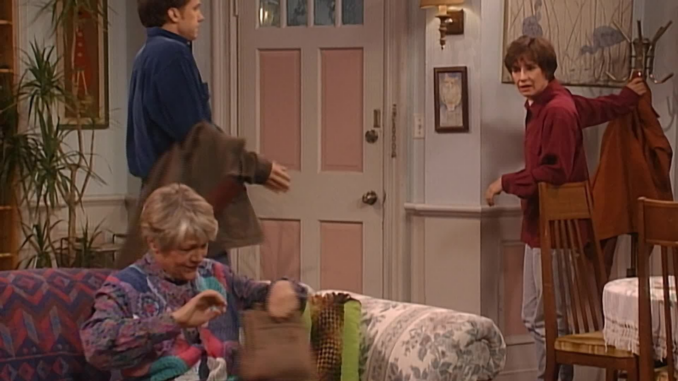
When Roseanne debuted in 1988, it was a breath of fresh air in the world of television. While other sitcoms focused on the lives of upper-middle-class families, Roseanne offered a refreshing take by depicting the struggles and triumphs of a working-class family in a small town. The Conners, led by Roseanne Barr’s bold portrayal of the eponymous character, were unashamedly real. This article explores how Roseanne accurately portrayed working-class America and why, even decades later, the show still resonates with audiences.
A Departure from Idealized Family Sitcoms
At a time when most sitcoms showcased picture-perfect families living in suburban bliss, Roseanne dared to be different. The Conner family didn’t have the luxury of a comfortable life. They were a working-class family, struggling to make ends meet, navigating economic hardships, and often facing the challenges of living paycheck to paycheck. Yet, despite their financial struggles, the family’s love for each other remained unshaken.
This was revolutionary in 1988. Shows like The Cosby Show and Family Ties presented affluent families with seemingly perfect lives, while Roseanne reflected the realities faced by many families in America. Roseanne’s character wasn’t just a comedic figure; she was a mother dealing with real-world issues—jobs that didn’t pay enough, a husband laid off from work, and a house that needed constant repairs. In depicting these everyday struggles, Roseanne gave a voice to millions of viewers who didn’t see their lives represented in other TV shows.
Depicting Economic Struggles Without Glamorization
One of the most striking aspects of Roseanne was how it depicted economic hardship. The show didn’t shy away from portraying the challenges of working-class life—whether it was Roseanne and Dan fighting over bills, the family going without new clothes, or worrying about healthcare. The show presented these problems in a matter-of-fact way, without sensationalizing them or making them seem comedic. Instead, it focused on how these struggles affected the family emotionally and socially, making it relatable to viewers who understood the pressure of living on a tight budget.
By showing the Conners’ struggles with money, Roseanne gave a voice to those who were often ignored in popular media. The show presented a realistic portrayal of working-class life, giving its characters depth and complexity. Even as the Conners faced financial stress, they remained resilient, finding humor and joy in the small moments that made family life meaningful. This authenticity helped the show resonate with a wide range of viewers.
Tackling Relevant Social Issues
Beyond its depiction of economic hardship, Roseanne also took on a wide range of social issues. The show wasn’t afraid to address topics like teenage rebellion, divorce, and drug addiction—issues that many working-class families faced. In doing so, Roseanne provided a platform for difficult conversations that had previously been avoided on mainstream television.
One of the most notable moments came in Season 3, when Roseanne confronted her son DJ about his school struggles and relationship with a girl from his class. This storyline addressed issues of racism and the struggles of raising children in an environment where discrimination was a constant factor.
Moreover, the show addressed gender roles head-on. Roseanne Conner wasn’t the traditional stay-at-home mom. She worked at a factory, and her role in the family was crucial to the financial survival of the household. Her character often clashed with traditional gender expectations, providing a powerful commentary on the changing roles of women in society.
Why Roseanne Resonates Today
Despite being set in the late ’80s and early ’90s, Roseanne feels eerily relevant today. Many of the issues the Conners faced—economic instability, unemployment, health care challenges, and social inequalities—are still prevalent in modern-day America. The show provided a blueprint for how working-class families struggle, and these issues have only become more pronounced in recent years.
The rise of reality-based sitcoms and dramedies like The Middle and The Goldbergs indicates that audiences are still hungry for shows that deal with real-life challenges. Roseanne was ahead of its time in that regard, and its ability to depict the reality of working-class life without embellishment has made it a lasting cultural touchstone.
Conclusion
Roseanne didn’t just entertain—it sparked a conversation about the realities faced by working-class families. Through its unapologetically honest portrayal of economic struggles, social issues, and the resilience of the Conner family, the show became a mirror for millions of viewers who felt overlooked by other TV programs. Its legacy remains strong because it continues to resonate with audiences who can relate to the everyday challenges it so brilliantly depicted.
